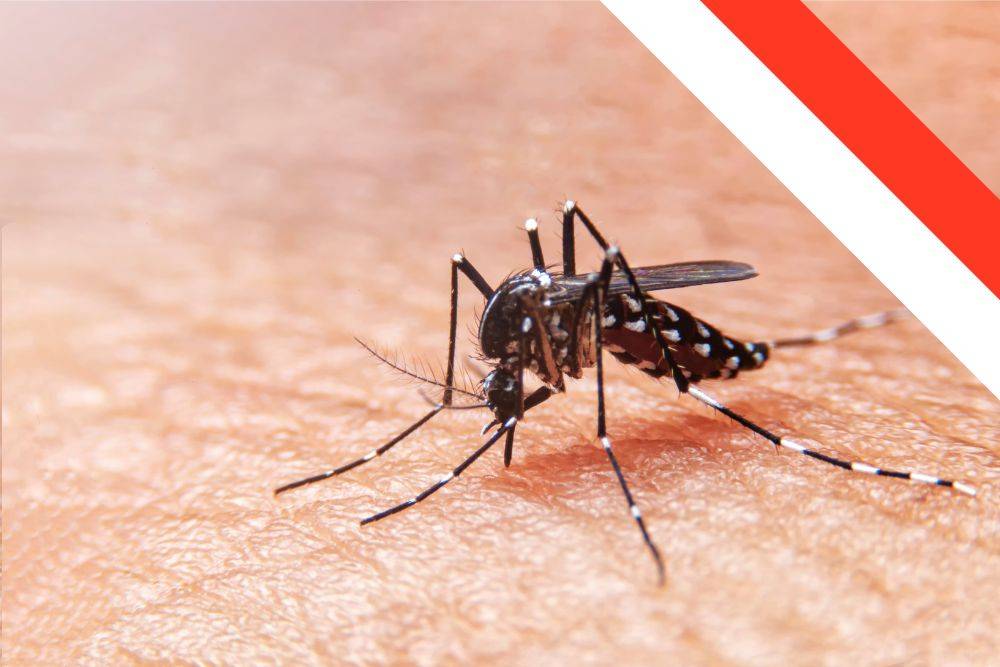In July and August 2024, the Indonesian Ministry of Health (Kemenkes RI) issued a stark warning about the anticipated surge in dengue fever (DF) cases across the archipelago.
This increase is primarily attributed to the prevailing hot weather conditions that have engulfed Indonesia. This is especially prevalent in regions such as Bali and West Java.
Rising Dengue Fever Cases
The incidence of dengue fever in Indonesia has exhibited a troubling rise, notably in Bali and West Java. Imran Pambudi, Director of Disease Prevention and Control at Kemenkes RI, has highlighted a projected escalation in cases by approximately 20-30%. This surge is compounded by various factors, including climate change trends and the recent prolonged periods of intense heat.
Impact of Hot Weather on Dengue Transmission
The correlation between the upsurge in dengue cases and the prevailing hot weather conditions is well-documented. Elevated temperatures contribute significantly to increased mosquito activity and shorter viral incubation periods within mosquitoes. This enhances the transmission dynamics of dengue fever. Imran Pambudi has underscored that the current case spike is exacerbated by changes observed during the COVID-19 pandemic over the past three years.
Preventive Measures to Combat Dengue Fever
To combat the heightened risk of dengue fever during periods of hot weather, Kemenkes RI advocates a series of preventive measures for public adherence:
- Maintain Hydration: Individuals are advised to consume at least 2 litres of water daily, with regular intervals of every 1.5 to 2 hours.
- Protective Clothing: Hats and long-sleeved clothing are recommended to shield exposed skin from direct sunlight.
- Seek Shade: Activities should be planned in shaded areas, with periodic breaks every half-hour to seek shelter during extreme heat conditions [2].
Raising Awareness and Community Engagement
Kemenkes RI urged communities to adopt proactive measures. Recommendations include limiting outdoor activities between 10:00 AM and 4:00 PM. They also recommend applying SPF 30+ sunscreen every two hours to safeguard against potential exposure to the sun’s harmful rays.
The Geographical and Epidemiological Landscape of Dengue Fever in Indonesia
Dengue fever, a mosquito-borne viral infection, poses a significant public health challenge across Indonesia, especially during the hot and humid months of July and August. According to recent data from the Indonesian Ministry of Health (Kemenkes RI), the incidence of DF has been rising steadily. We have witnessed particularly alarming spikes observed in regions like Bali and West Java.
Geographical Spread and Hotspots
The geographical spread of dengue fever across Indonesia exhibits distinct patterns. Urban areas with dense populations and inadequate sanitation infrastructure often experience higher disease incidences. Factors such as stagnant water in urban environments serve as breeding grounds for Aedes mosquitoes, the primary vectors responsible for transmitting the dengue virus.
Epidemiological Trends
Epidemiologically, dengue fever in Indonesia demonstrates periodic outbreaks influenced by climatic conditions. The monsoon seasons, typically from October to March, provide conducive mosquito breeding and transmission environments. However, recent surges in DF cases during the dry season underscore the evolving dynamics influenced by climate change and urbanisation.
Socioeconomic Impact and Healthcare Burden
The burden of dengue fever extends beyond its direct health impacts, affecting socioeconomic factors and healthcare systems. High hospitalization rates during outbreaks strain healthcare resources, particularly in regions with limited access to medical facilities. Vulnerable populations, including children and the elderly, are at increased risk of severe dengue complications, necessitating timely intervention and medical care.
Integrated Vector Management Strategies
Kemenkes RI has implemented integrated vector management (IVM) strategies in response to the escalating DF cases. These comprehensive approaches encompass environmental sanitation, community engagement in mosquito control measures, and targeted vector surveillance. Efforts to eliminate mosquito breeding sites in urban areas and promote community awareness are pivotal in preventing DF transmission.
Collaborative Efforts and Future Directions
Collaboration between government agencies, healthcare providers, and communities is paramount in combating dengue fever in Indonesia. Enhancing surveillance systems, expanding access to diagnostic tools, and researching emerging dengue virus strains are critical for preparedness and response strategies.
Challenges and Strategies
In conclusion, dengue fever remains a formidable public health challenge in Indonesia, exacerbated by environmental factors and climate change. Effective prevention and control measures, community engagement, and robust healthcare infrastructure are indispensable in mitigating the impact of DF outbreaks. Therefore, by raising awareness and implementing proactive measures, Kemenkes RI strives to safeguard public health and reduce the incidence of dengue fever nationwide.
Have a pressing question for a doctor? Medical Channel Asia has launched a community forum page where you can get questions answered by a medical specialist. Visit the community forum here.

